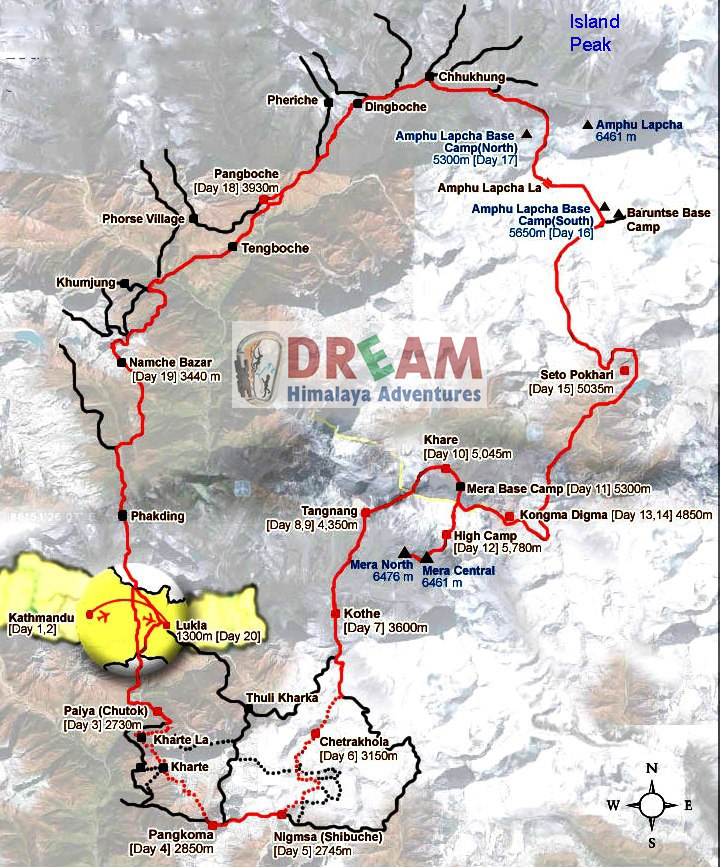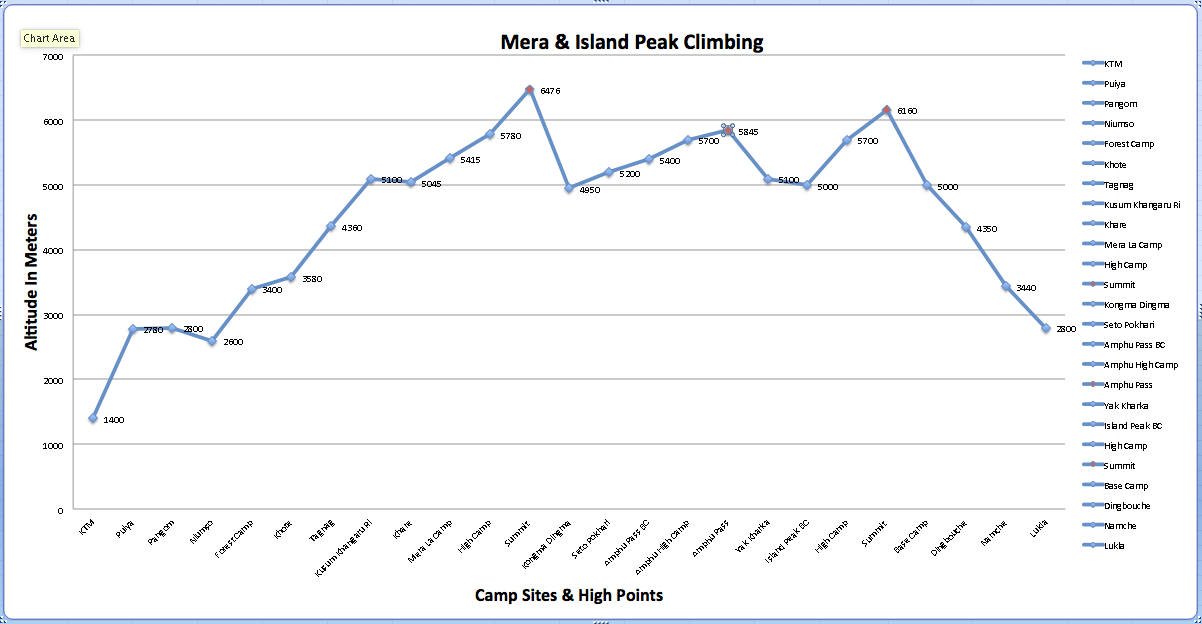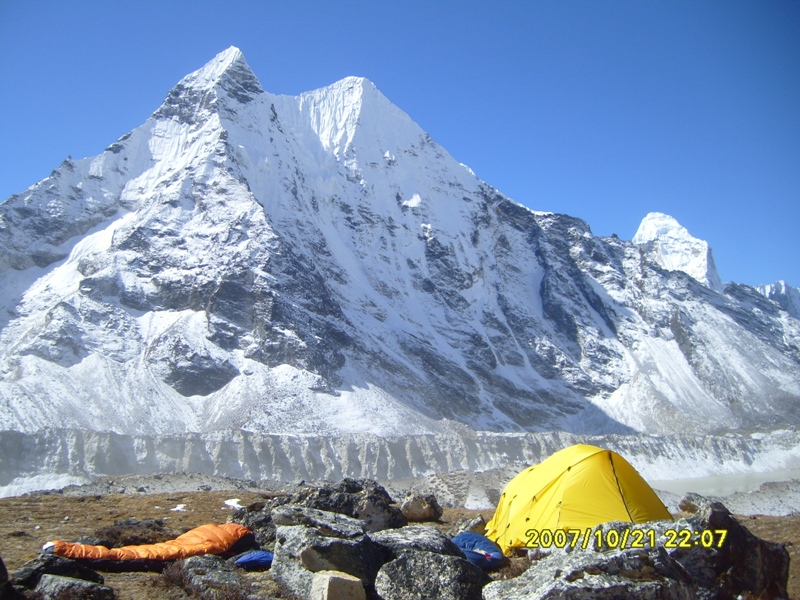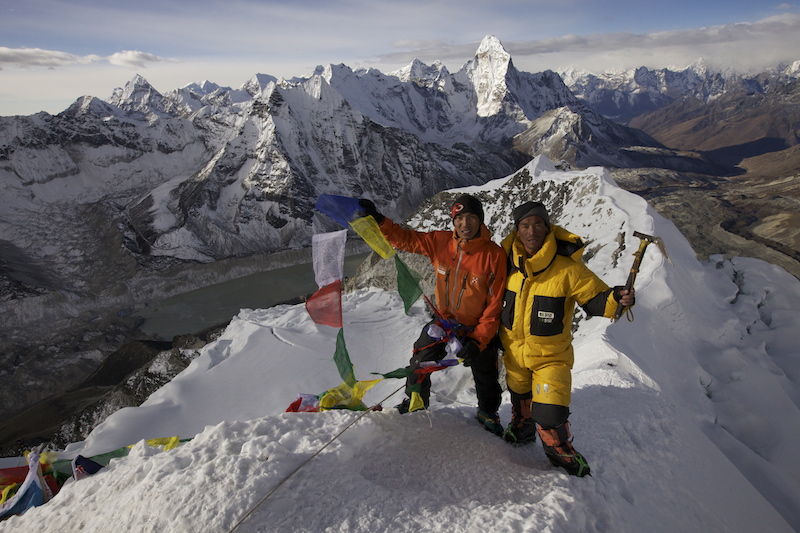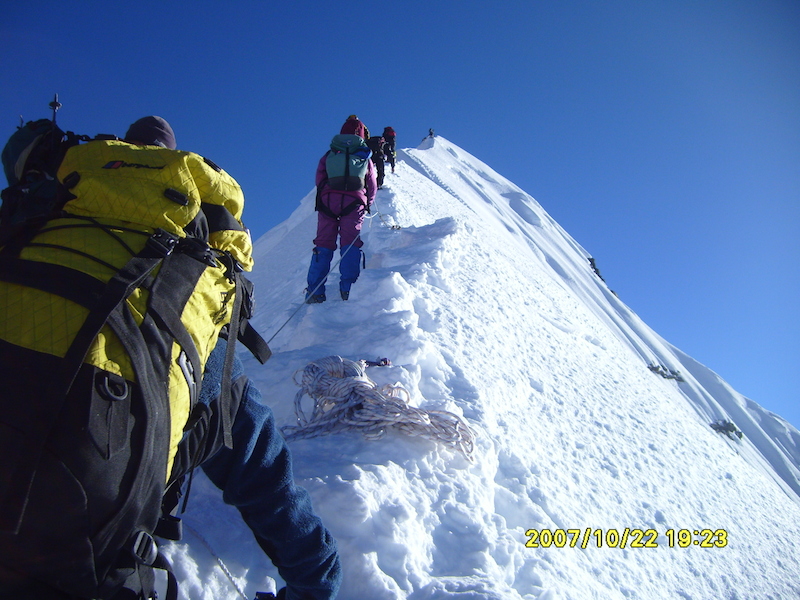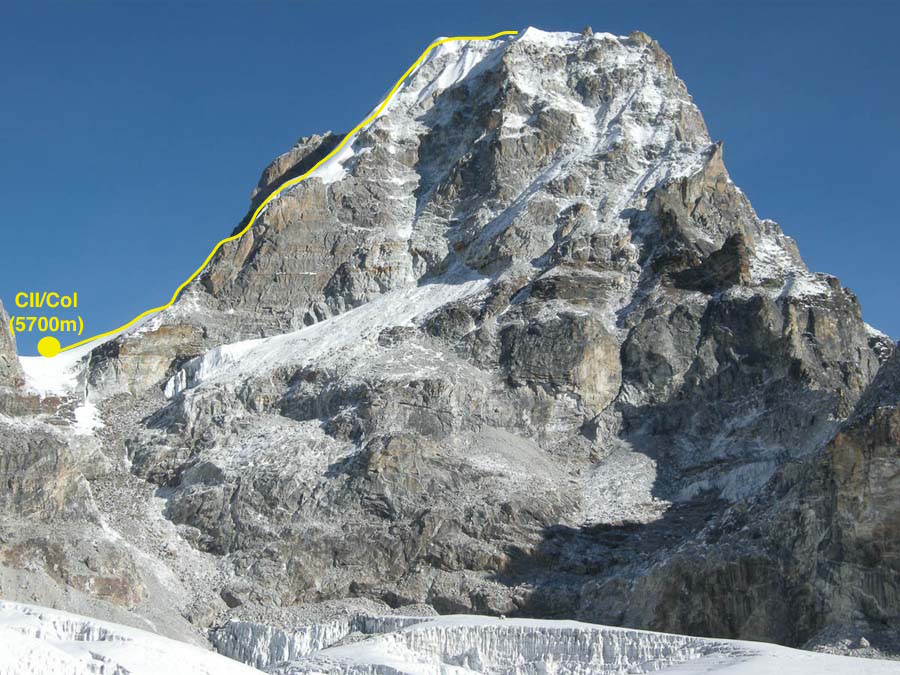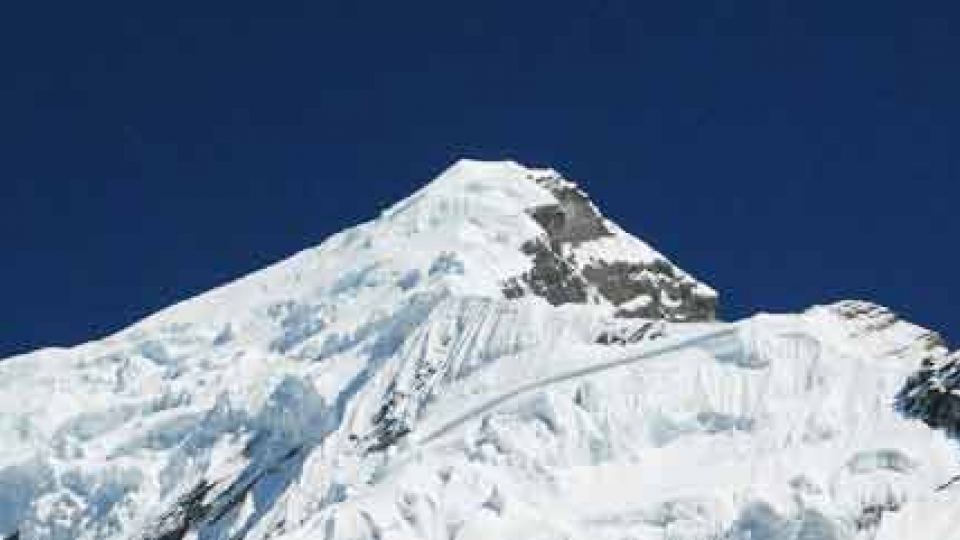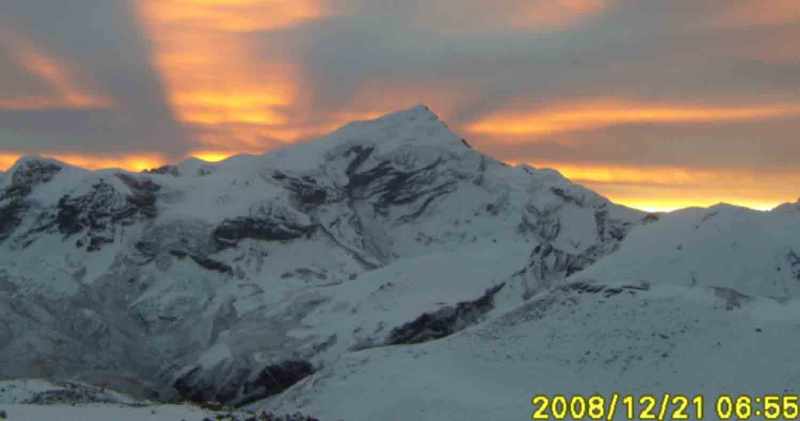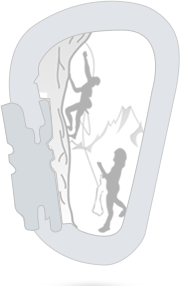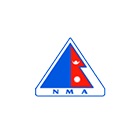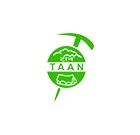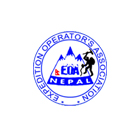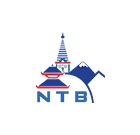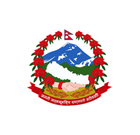Mera Peak (6,476m) was first climbed in May 1953 by J.O.M. Roberts and SenTenzing. Our ascent will follow the glacier that leads to Mera La (17,767') and on to high camp where we will prepare for our early morning summit. From high camp, we can take in a sweeping view of Kanchenjunga, Chamlang, Makalu to the east, Everest and Lhotse to the north and Ama-Dablam, Cho-Oyu and Kangtega to the west. This view is undoubtedly one of the most stunning in all of Nepal. With good conditions, we will summit Mera Peak the following morning.
Island peak (6,160m) is also officially classified as a group “B” trekking peak by Nepal Mountaineering Association also known as “Imja-Tse, looks like an island in a sea of ice and that is why it is called Island peak. It's situated at the top of the Imja Khola valley in the Khumbu region. To climb the peak is semi-technical and straight forward so that the climber must be proficient in using materials like ice axe and crampons. The most difficult section is a mixed rock and ice wall at the slope of around 45 degrees leading to the narrow summit ridge.
This trekking trip is organized on a camping accommodation based and the trekking approach/route is much quieter than the main Everest trekking route. People, who love to trek to remote areas with very few tourists, this is a perfect trekking route.
Our approach to the peaks begins with a spectacular mountain flight to Lukla (gateway of Everest region). We slowly make our way south through the terraced fields that line the Dudh Kosi to Puiyan and on to Pangum.
We keep to the well-made track on the western valley wall and from Sibuche, catch our first view of the triple summit of Mera Peak. Our gradual acclimatization program means we will stop at the hamlet of Niumso and use a gorgeous bamboo-surrounded forest camp at Chetra Tenga before heading up to the village of Khote.
As we approach the tiny village of Tagnag. We take the opportunity to do a side trip from Tagnag, perhaps a day walk on the flanks of Kusum Kanguru RI, to help our bodies acclimatize. A trail to Khare is Rocky outcrops, moraine ridges and stunning side valleys allowing us some further days of exploration and acclimatization. At Khare, we do some basic training on a rope and play with some climbing gears and we head up to Mera La next day then to high camp and we do the final summit push on MeraPeak. We will continue north through the uninhabited Hunku Valley with almost constant views of magnificent mountains. After crossing AmphuPass (18,958'), we will establish camp at the base of Imje-Tse. Named "IslandPeak" first climbed by a team preparing for an Everest ascent in 1953. IslandPeak has an impressive, highly glaciated West Face, which rises from the Lhotse Glacier.
From base camp, we will ascend a steep, grassy slope and small rocky steps to high camp. It is necessary to climb a steep, exposed 300' snow and ice ramp to the summit ridge. Fixed ropes will be used at this point in an otherwise non-technical snow climb to attempt the summit and we get into the lower section of the Everest main trail. We trek out via several Sherpa villages i.e. Dingboche, Tengboche, Namche where we have the opportunity to visit the most sacred Buddhist monasteries and views throughout the way is stunning.
DETAILS ITINERARY
Day 1
Arrive in KTM (1310m), transfer to hotel and briefing
After you arrive at Tribhuvan International Airport in Kathmandu, you will have to go through custom formalities. You will be greeted by our representative who will be anxiously waiting for you with a placard displaying your name in his hand. You will be transferred to the 3-Star category hotel in a private vehicle. Once you get refreshed, you will get briefing regarding the itinerary and you will also be introduced with your crewmembers and other trekkers who are going to join you on the trip. Enjoy welcome dinner in the evening where you can taste authentic Nepali dinner. Stay overnight in a hotel.
Day 2
Gear sorting out, city tour & necessary preparation and packing
In the morning after breakfast, we will organize half day sightseeing tour during which you will be taken on memorable UNESCO Heritage Tour. Tour begins with visit to Nepal’s holiest Pashupatinath Temple Complex and takes us through Nepal’s largest Bouddhanath Stupa and 2500 years old Swoyambhunath Stupa. We will return to hotel in the afternoon and time for shopping of any missing items, packing and getting ready for the trip. Mera Peak Climbing Permit as well as Island Peak Climbing permit is required to climb these peaks. We will check for the condition of your trekking gears like sleeping bag, trekking boots and down jacket.
Day 3
Fly Lukla 2,800m. Trek to Puiyan (2800m) 3-4hrs
We will drive to domestic terminal of Tribhuvan Airport early in the morning and catch a flight from Kathmandu to Lukla. We will follow one of the most scenic air routes in the world with panoramic views of glistening mountains to Tenzing Hillary Airport in Lukla. Lukla allows access to Everest Khumbu region. We will assemble the crew and take breakfast before start of Mera Peak Climbing. Lowering down from Lukla, we will proceed through forest area to Surke. Moving further through Pakhapani, we will pass through local villages to Puiyan / Paiya. Enjoy the views of KongdeRi, Khatang Peak and other 7000m+ peaks and mountains and stay overnight in Puiyan.
Day 4
Trek to Pangom/ Pangkoma (2,800m) 5-6hrs
After an early morning tea, we will descend to wooden bridge. Crossing the Puiyan River over bridge, we will follow the slippery path to Kari La Pass. We will cross this pass and walk through few dispersed villages. The trail continues through bamboo and rhododendron forest. We will follow the scenic path with incredible views of DudhKunda Mountain and DudhKoshi River Valley to Pangkoma village. Trading is the chief occupation of locals in Pangkoma.
Day 5
Trek Niumso/ Nigmsa (2,600m) 4-5hrs
Leaving Pangom early in the morning, we will lower down through the rock-strewn path that takes us through forest of colourful rhododendron forest. Exiting from the forest, we will walk along Mani walls and teahouses. Following the scenic path with close-up views of south face of Mera Peak (6064m) and Naulekh Peak, we will walk through pine and rhododendron forest to Niumso/ Nigmsa. Stay overnight in Niumso.
Day 6
Strenuous trek to ChetraTenga forest camp (3,400m) 7hrs
After an early morning tea, we will follow the steep and tapered path uphill through rhododendron and bamboo forest. We need to be careful while passing through landslide area. We will descend to river. Walking along the river, the trail contours up to the forest where we will enjoy the views of Himalayan wildlife. Walking past the stone cave, we will reach ChetraTenga Forest Camp where we will stay overnight.
Day 7
Moderately strenuous day to Kothe (3,600m) 5-6hrs
Continuing our journey through ChetraTenga Forest Camp, we will arrive at a perfect view point of Hinku Valley that allows spectacular views of surrounding Mountains and peaks. Following the levelled path through bamboo and pine forest that is rich in wildlife, we will enjoy the breathtaking views of Mera and Hinku Valley as we move towards TashingDingma. We will follow the river in Hinku valley all the way to Kothe where we will stay overnight.
Day 8
Acclimatization day up to 4,000m
Short hike to Kusum Kanguru Base Camp will be made on this day to ensure proper acclimatization. It takes around 4hrs to reach Base Camp from Kothe. The Base Camp greets us with spectacular views of Everest, Cho Oyu, Lhotse, Nuptse and Amadablam. We will return to our camp at Kothe for overnight stay.
Day 9
Trek to Tagnag (4,356m) 5-6hrs
Following the western edge of Hinku River, we will follow the scenic path uphill with view of Peak 39 to Gonmdishung which is a summer settlement of yak herders located to the western edge of Hinku Drangka. From Gondishungt, we will arrive at 200yr old Lungsumba Gompa where we can see the direction towards Mera Peak been inscribed in rock. Bit further from Gompa exists Tagnag/ Thaknak where we will stay overnight. Enjoy the views of Thamserku, Kusum Kangru and Kangtega peaks.
Day 10
Acclimatization: Kusum Kanguru-Ri (5,100)
Taking break from trek is important especially from acclimatization point of view. Those who are feeling fit can make side trip to Kusum Kanguru Ri. Kusum Kanguru distinct Hinku Valley with Dudh Koshi Valley. From Kusum Kanguru Ri, we will descend to Tagnag where we will stay overnight.
Day 11
Trek to Khare (5,045m)6hrs
Leaving Tagnag, we will walk through the lateral moraine of Dig Glacier to Dig Kharka which exists near to the base of HinkuNup Glacier. Dig Kharka offers the scenic view of Charpate Mountain. Leaving Dig Kharka, we will climb uphill through moraines to the snout of HinkuNup. Walking further, we will cross Shar Glacier and walk through steep path to Khare. We will be greeted with spectacular view of North face of Mera Peak. Stay overnight in Khare.
Day 12
Rope training & acclimatization day to Mera La Camp (5,415m)
This is a preparation day for Mera Peak Climbing. On this day, you will receive a pre climb training from climbing guide. He will share peak climbing strategy and teach you to use the climbing gears like ice axe, crampons, harness and ascender properly. You will also be taught how to use ropes while moving up and down. The climbing guide will make sure that every equipment is in order.
The trail continues through boulder and glacier to Mera Peak Base Camp/ Mera La Camp. Following the steep route slowly and gradually, we will reach to Mera La Camp. You will get final training before climbing Mera La. After training for 2-3 hours, we will return back to Khare for overnight stay.
Day 13
Mera la High Camp (5,780m)4-5hrs
We will reach to the Mera High Camp on this day. Walking through the rock-strewn path, we will walk for few hours to Mera High Camp. The trail is strenuous as we need to pass through crevasses. We reach to the top of the rock band that is marked by a cairn. We will establish our high camp at the top of rock band. The Camp site offers spectacular views of Everest, Makalu Mountain, Cho Oyu Mountain and south face of Lhotshe, Nuptse and Baruntse Mountains. Stay overnight in Mera High Camp.
Day 14
Summit Mera Peak (6,476m), same day trek to KongmaDingma 8-9hrs
We need to begin our trek quite early before sunrise on this day as our aim is to reach to the summit by noon. After preparing the baggage, we will take slow climb to the summit. Temperature is quite cold in this region. Our trail continues through glacier to snow hump-back ridge. The trail continues through the snout of glacier to the south summit ridge. We need to use fixed cables on this day. Mera Peak summit offers panoramic views of Everest Mountain, Kanchenjunga Mountain, Makalu Mountain, Cho Oyu Mountain and other peaks and mountains. After capturing the memories in camera, we will lower down to High Camp of Mera Peak and follow the descending path toKongmaDingma where we will stay overnight.
Day 15
Spare day for Mera Peak summit in case of bad weather
Including a reserve day in our itinerary makes sure that our trip goes according to plan even if we get delayed by unforeseen circumstances like bad weather and other factors. Also, it makes sure that we will not get behind our schedule even if our trekking members get injured or sick.
Day 16
Honku Valley/SetoPokhari (5200m) 5-6hrs
Leaving KongmaDingma early in the morning, we will walk through yak pasture. The trail continues through remote Honkuvalley. We will be enthralled at the sight of Chamlang and Baruntse Mountain. After following the level path for couple of hours, we will take gradual ascend through the forest withclose-up views of Everest and Lhotse to arrive at SetoPokhari where we will stay overnight.
Day 17
AmphuLapcha base camp (5400m)/ High Camp (5,700m) 6-7hrs
SetoPokhari is the first lake that we encounter in Upper Honku Valley. Following the high altitude path, we will walk through the remotest parts of Himalayas. This is one of the least crowded area. The path is scenic with views of Chamlang (7321m) and its hanging glaciers to the right. The trail continues to AmphuLapcha Base Camp. Time permitting, we will climb to High Camp for overnight stay.
Day 18
Corss Amphu pass (5,845m) & Trek to Chukung 6-7 hrs
After making final preparations and checking gears, we will cross Amphu Laptsa Pass. This is a difficult pass to cross so we may need use of ropes and crampons. We will notice follow the collection of rocks. Towards the northern side, we will walk through steep slope with help of fixed cables and descend to the snow. Following the descending trail from snow basin to moraine and finally to valley, we will reach Yak Kharka, the summer settlement of yak herders where we will stay overnight and we continue until Chukung (4700m), where we confortable stay at better teahouse with better food.
Day 19
Rest dat at Chukung or extra day in case of bad weather or emergency day
If we make to Chukung earlier day, we will take a complete day rest, and do some preparations for Island Peak climb for next day. This day will be a reserve day in our itinerary makes sure that our trip goes according to plan even if we get delayed by unforeseen circumstances like bad weather and other factors. Also, it makes sure that we will not get behind our schedule even if our trekking members get injured or sick.
Day 20
Trek to Island Peak base camp (5200m) 5hrs
From Chukung, we will do easy short trek to Island Peak base camp, it will be about 3 hours walk only, so we will start late morning from Chukung. Enjoy the spectacular views of surrounding mountains and moraine valley. We will stay at camp and getting ready for Island peak summut push very very early next day morning.
Day 21
Summit Island Peak and decent to base camp 8hrs and continue to Chukung
The trail continues to raise up from the rock gully. We need to climb series of short rock steps which will bring us to the right side of the drain. We will follow a ridgeline which will take us to the exposed traverse onto the snout of the summit glacier. We will need rope on this day. Moving through crevasses, we will climb 40 degree slope by help of rope and follow the ridge up to the summit. We will spend some time in summit enjoying the successful ascend of Island Peak and lower down to Base Camp, we will have some hot meals and drinks at Base Camp and continue walk to Chukung for overnight stay.
Day 22
Trek to Debouche (3,867m) 5-6hrs
From Chukung, we will follow the descending trail to Dingbouche. We will enjoy the views of Lhotse, Imja and Amadablam Mountains and walk along river which takes us through the less vegetation area. Following the sloped path uphill, we will reach Dingboche where we will have lunch there. We can see fields enclosed by stone walls at Dingboche. Dingboche offers spectacular views of Amadablam, Lhotse and Nuptse peaks. After lunch we will continue walk to Debouche where we will stay overnight.
Day 23
Trek to Namche (3440m)4-5hrs
From Deboche, we will proceed towards Tengboche Monastery where we can see Buddhist Lamas performing rituals. Tengboche Monastery is one of the famous monasteries in Khumbu region. From Monastery, our trail continues along DudhKoshi Valley to the small village of PhukiTenga. We will follow the ascending path to Namche. The path is scenic with views of Everest, Lhotse, Nuptse and other mountains. Stay overnight in Namche.
Day 24
Trek to Lukla (2800m) 4-5hrs
From Namche, we will lower down to rhododendron forest and walk along Dudhkoshi River to Phakding. Walking past the walled road of Ghat, we will reach Lukla. Stay overnight in Lukla.
Day 25
Fly Lukla to KTM, free day in KTM (30 min flight)
We will catch an early morning flight from Lukla to Kathmandu. This is rest day. Spend the day as you like. You can go for shopping in Thamel where you can buy souvenir items. We can also arrange for guided sightseeing tour. Alternatively, you can arrange your photo albums and jot down memories in your journal. Stay overnight in a hotel in Kathmandu.
Day 26
Free day in KTM, Shopping, reserve day for Lukla – KTM flight
This is rest day. Spend the day as you like. You can go for shopping in Thamel where you can buy souvenir items. Thanka painting, pashmina shawl and Nepali handicrafts are most popular gift items. Upon your interest, we can also arrange for guided sightseeing tour. Farewell dinner will be served in the evening.
Day 27
Int'l departure for flight to home
We will transfer you to the Airport as per your scheduled flight for your onward destination. Safe journey. We hope to see you soon.


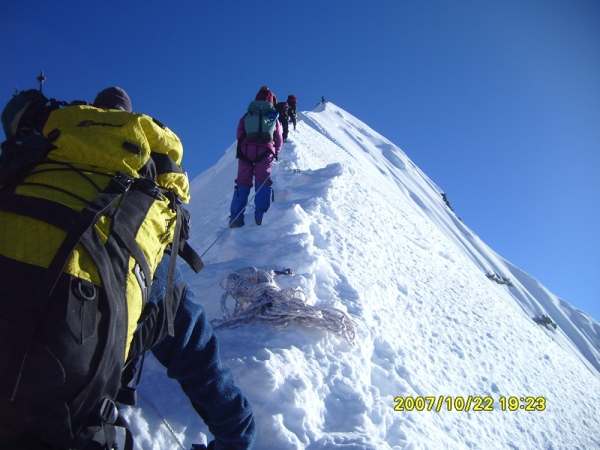
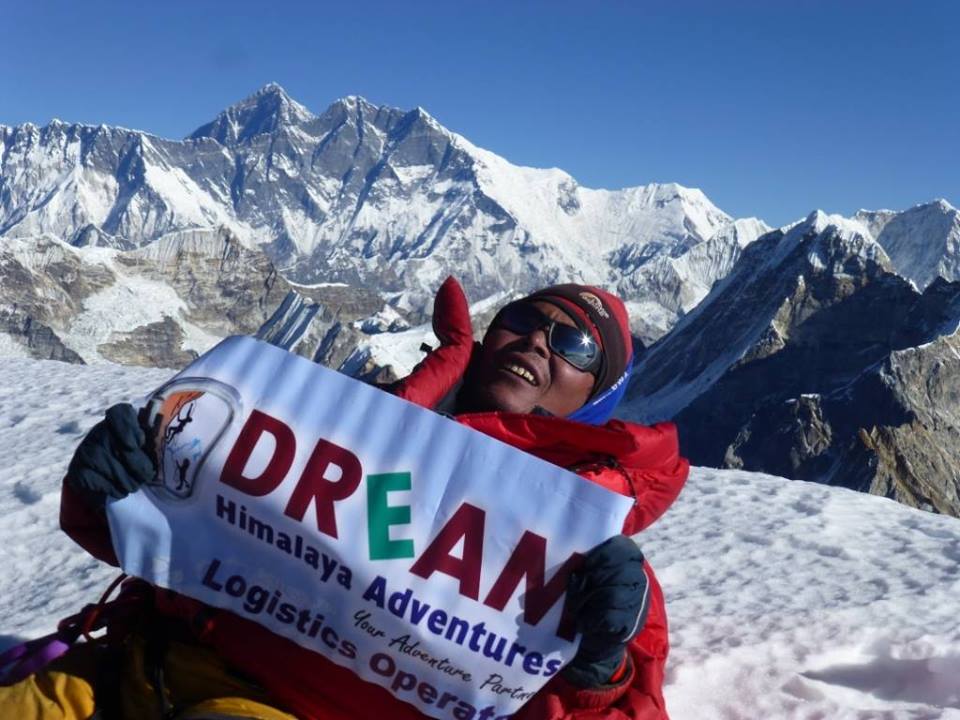
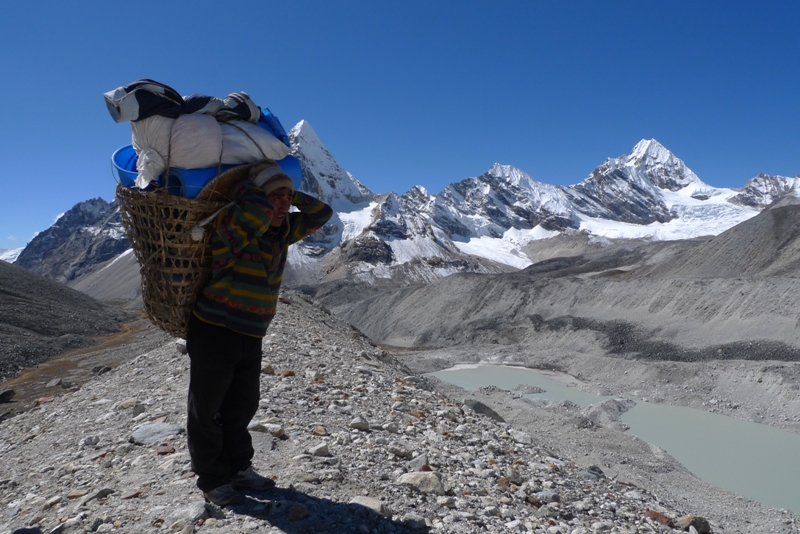
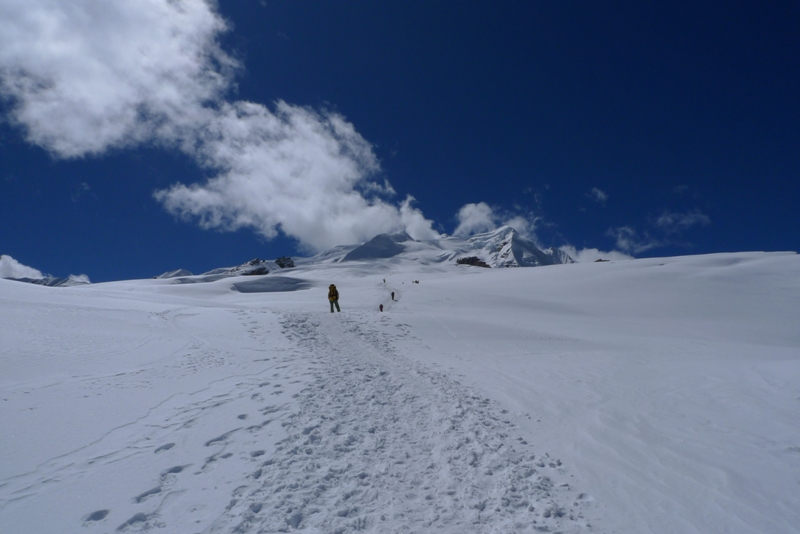
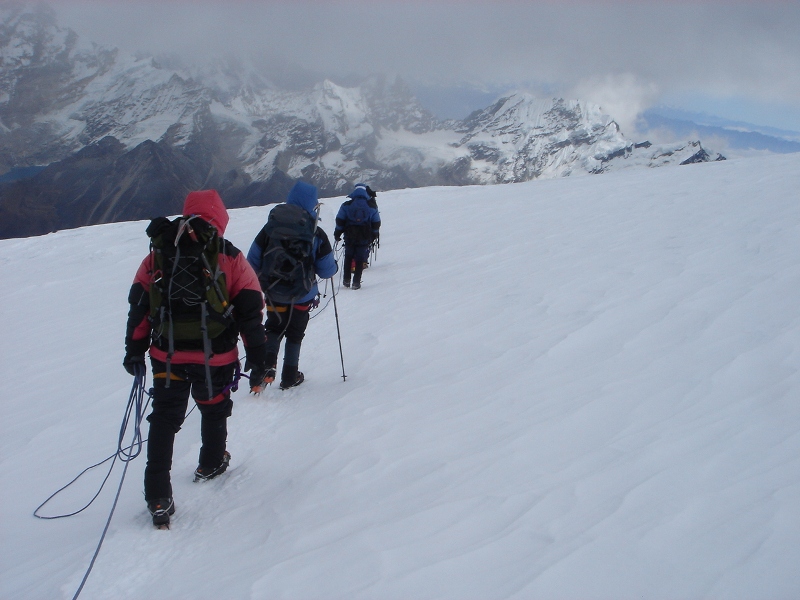
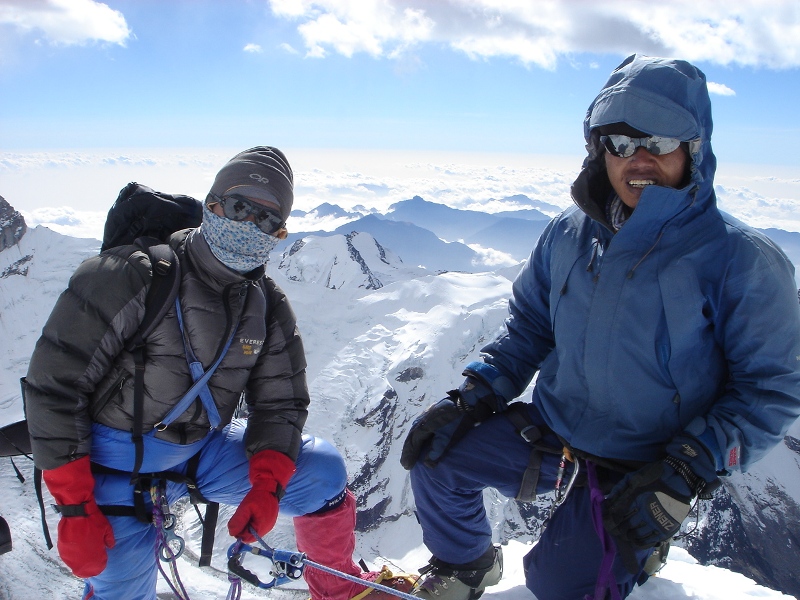
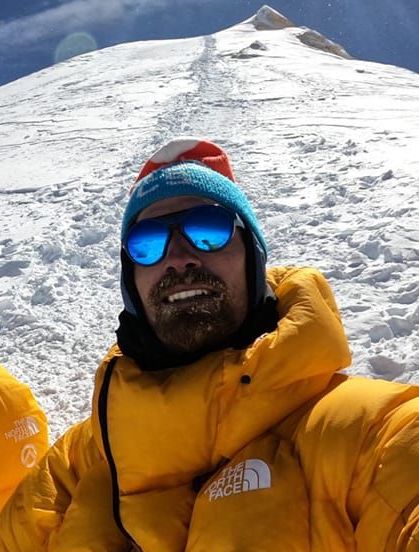
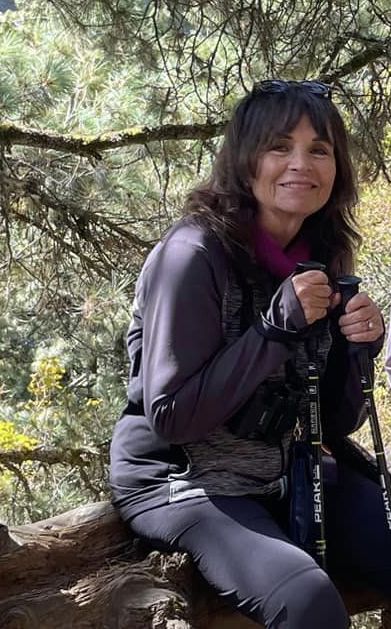
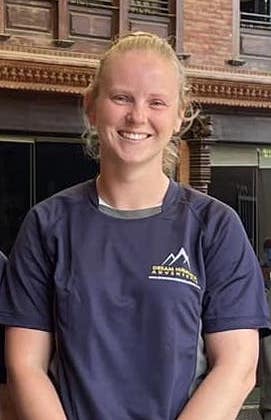
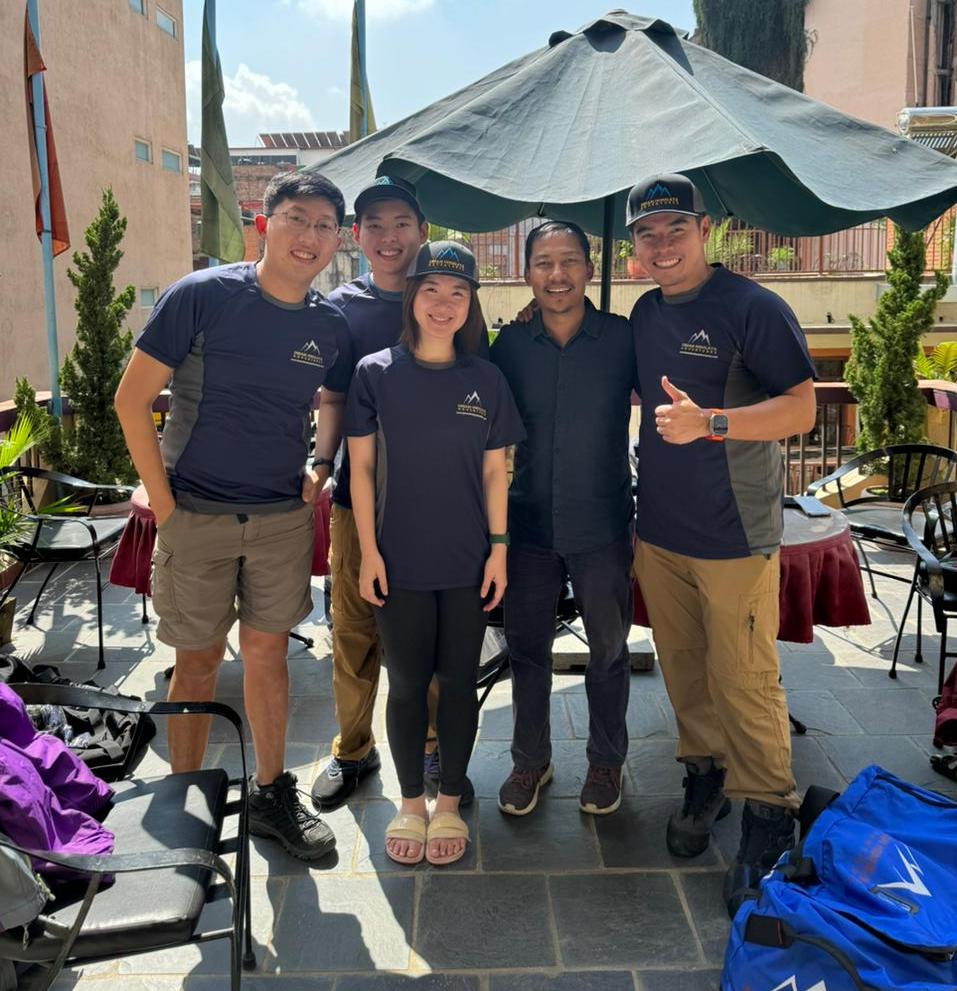
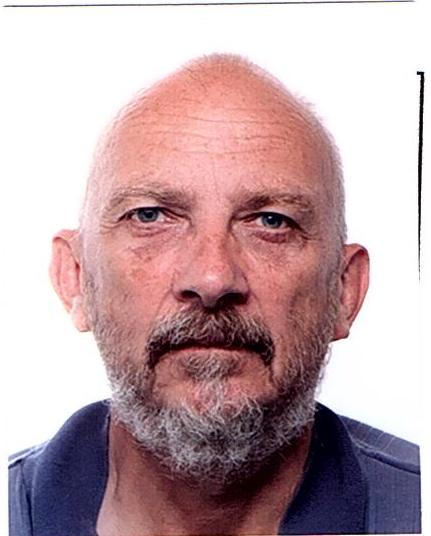
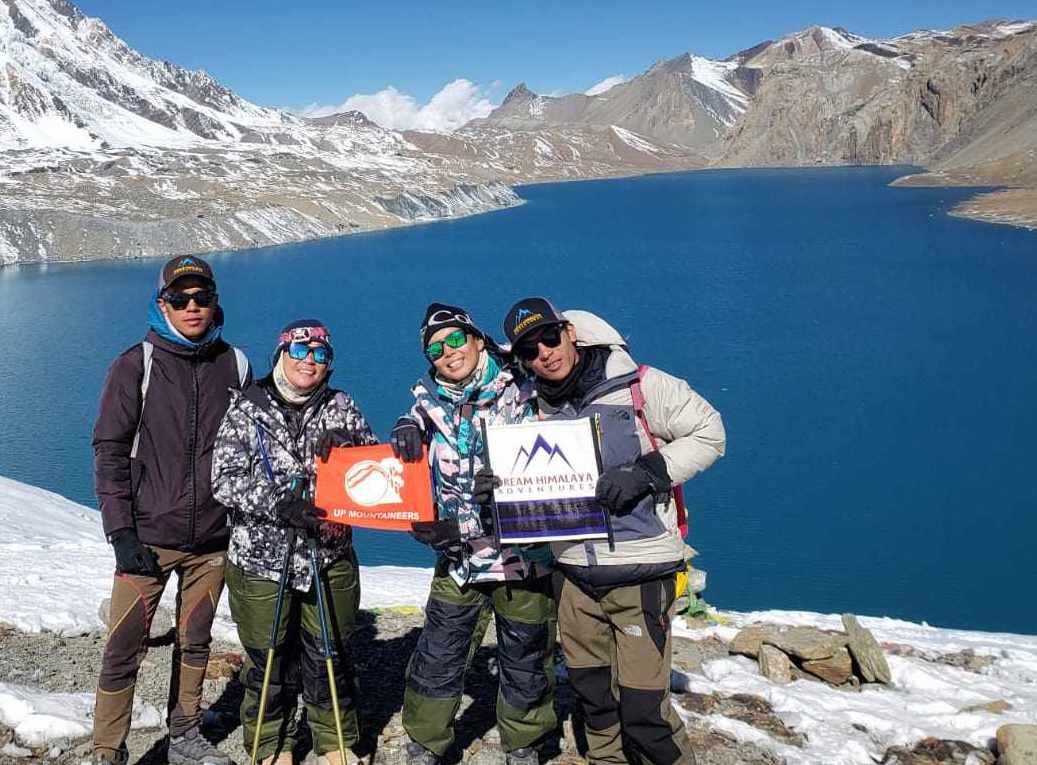


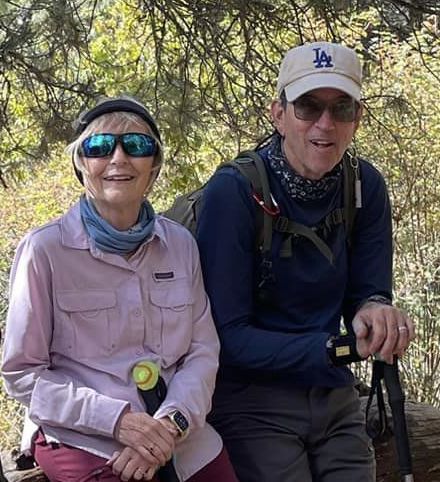
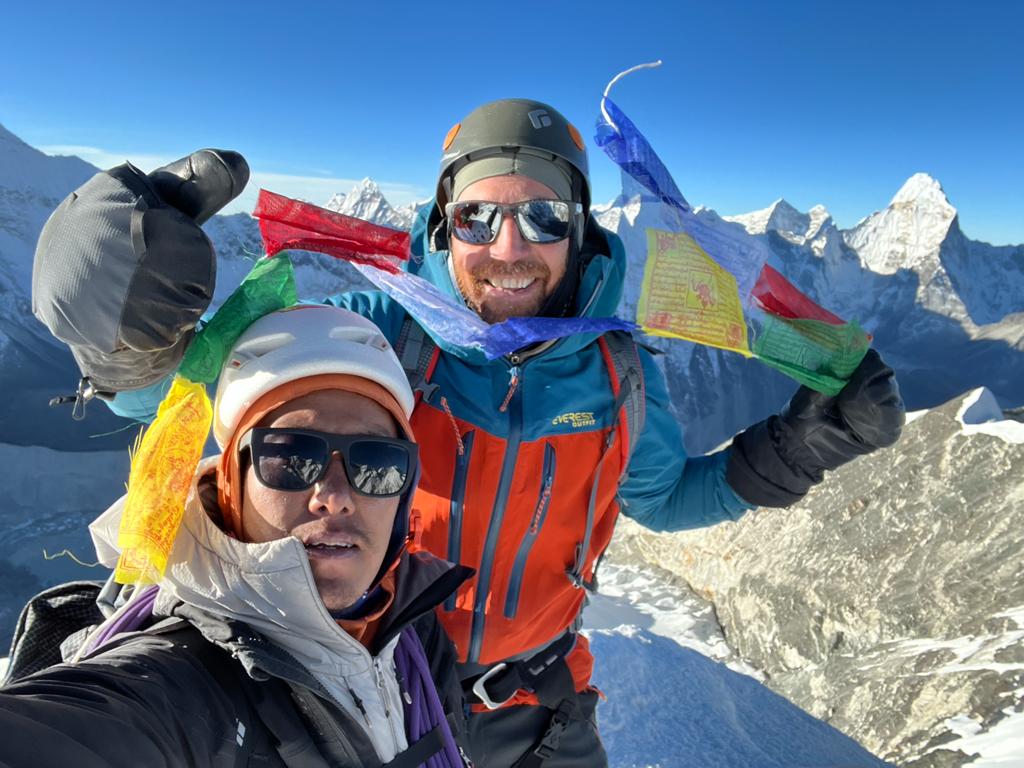
 Download Gear Check List
Download Gear Check List
